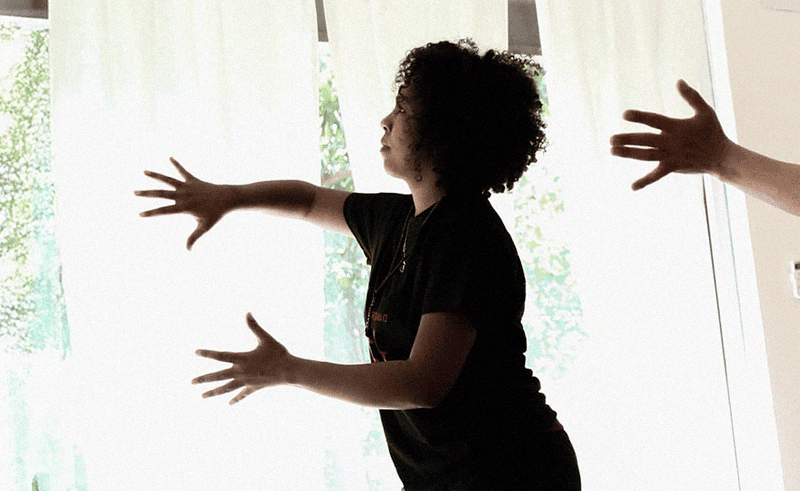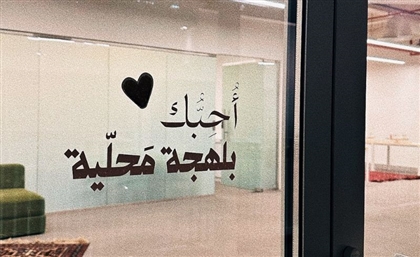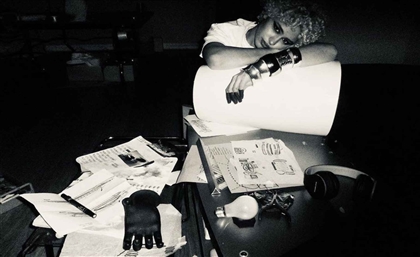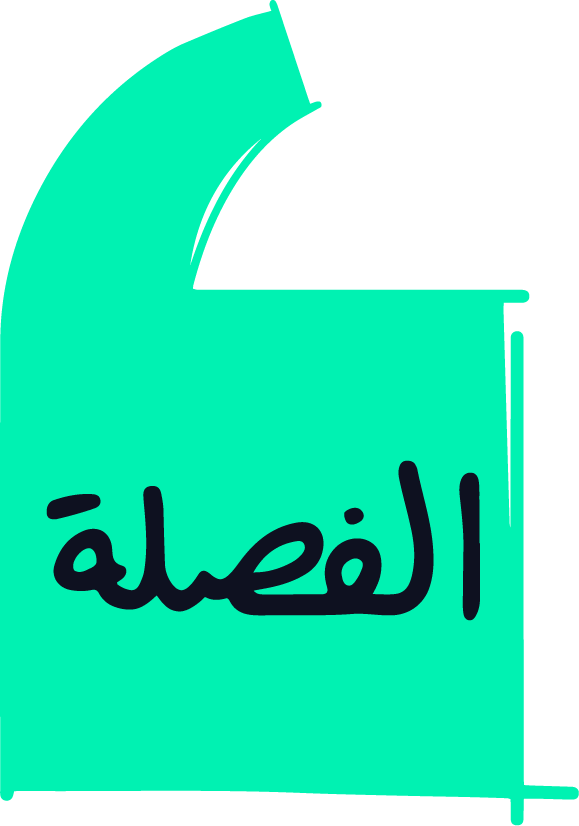Egypt's First Dance Therapist Helps Women 'Shake Shame' Away
"I can't be a woman on my own. I need to be surrounded by women to become one."

When I met with Asmaa Halim, the first ever Dance and Movement Therapist in Egypt, in her studio, she danced. She performed a traditional Nubian dance, which she described to “flow like the river”, and looked at me, and I felt the familiar tingle of shame move through my limbs. In that moment, Halim danced not for a camera, not for an audience and definitely not for the entertainment of a man; she danced for connection. What is shameful about the attempt at connection between two willing people?
Unlike many girls in modern-day Egypt, Halim did not grow up with the view that dancing was shameful. She grew up in a mostly Nubian-inhabited apartment building in Cairo, where everyone was always dancing. “I was raised on the notion that dancing was as normal as talking. It was a means of love, of connection, of forging relationships. Old men who walked with canes would get up and dance out of love.”
Halim didn’t start out thinking dancing could heal people. She first studied psychology, with a focus on resilience, and practised various talking therapies for 10 years before she heard about relational expressive dance and movement therapy (DMT) at a conference in 2014. “It wasn’t something I had ever considered before, but when I learned about it, after 10 years of working with all types of patients, it felt like it just made sense.”
Halim tells me that if she had encountered the concept of DMT any earlier, it wouldn’t have struck her as hard as it did. It took being raised in a dancing community and a decade of treating all types of patients - people experiencing chronic depression, addiction, psychosis - to recognise the importance of extending therapy to the body. “Emotion is derived from the word ‘motion’, so it makes sense that how we feel is linked to our movement. During DMT, we barely speak, but emotional blocks are moved. We can talk about emotions for hours, and it is good work that yields results, but movement drives this talking home. It makes embodied changes that you can feel. It allows the body to understand. In my practice, I don’t lecture women on the fact that they are strong and should take up space, but it is communicated through movement.”
While the practice of DMT as a studied therapy has only been in Egypt for 10 years - the 10 years that Halim has been practising - dance has been a means of emotional release for centuries. In her struggle to study DMT in Egypt at a time when no one in the country taught it, Halim explored this in detail. She read about the practice, and began applying it however she could, at first at regular belly dancing classes, and then at classes where she learned how to teach belly dance.
“After I got certified as a trainer of belly dancing, I began hosting small classes on the roof of my home, mostly for friends. I would observe, with deep respect, how the movement of the body affected mood, thoughts, and one’s relationship with life. I would document these observations, learn from them, and then take them back to my professor in psychology so we could reflect on them together.”
Before she was able to professionally study DMT abroad, Halim’s intimate understanding of both psychology and dance enabled her to understand the practice on a molecular level. Then, after she began studying DMT, specifically relational expressive dance and movement therapy (DMT-ER) at a specialised school in Italy, she began incorporating what she learned into her work. In experimentation, she took it to her practice at Abbassiya Mental Health Hospital with patients suffering psychosis, under the supervision of her professors.
“This whole experience was entirely experimental. We would clear the benches at the cafeteria for classes and play music on speakers the hospital director at the time got from his home. In the group, we had a catatonic patient who didn’t speak. Gradually, he began to move during the sessions. Then he started making facial expressions, eating with people, and even speaking after a while.”
“This whole experience, under supervision from DMT-ER professors, was entirely experimental. We would clear the benches at the cafeteria for classes and play music on speakers the hospital director at the time got from his home. In the group, we had a catatonic patient who didn’t speak. Gradually, he began to move during the sessions. Then he started making facial expressions, eating with people, and even speaking after a while.”
The claims Halim makes are big: of psychotic patients emoting, elderly women losing joint pain, and of differences in women noticeable by their families and coworkers, who then show up at her studio. Scepticism, at this point in the article, is not unexpected, but this is the testimony of a woman who spent 10 years practising exclusively evidence-based therapies like cognitive-behavioural therapy (CBT) and psychodynamic therapy, who then independently studied every element of DMT on its own, and then fought tooth and nail to afford to study it academically. Her life’s work demands and earns clients’ trust.
Despite or perhaps in evidence of its universality, dance is culturally variant. It is, in Halim’s view, reflective of the environment its creators in which its creators existed. This is why Nubians dance like waves, flowing like the Nile, and why Halim’s thesis explored the relationship between belly dancing and Egyptian women’s body image. was on the ancient wisdom of belly dancing as a means of both release and connection. "There was a wisdom our grandmothers carried, in the way they danced from the womb - what we now call belly dancing. It was as if they were helping the womb fill with joy and connection, allowing the muscles to release and soften. This is something women have always needed, and continue to need."
Halim works exclusively with women, in three-month courses of about 10-12 women. People go to her as part of their treatment plan, or of their own will. Her practice enables women in all stages of life to accept the changes in their bodies, from puberty, through pregnancy and postpartum, to menopause.
“The reason I work exclusively with women is that I am a woman in Egypt. The mere concept of my body as a woman’s walking in the street elicits so much shame, not because of the fat it holds or the lack of it, but because it is a woman’s body. I held this shame. It changed my relationship to my body and myself. It erases the self-concept. Women stop feeling like they exist.”
Women dance together in their homes, in henna nights, in the women’s bathroom. At the ladies’ gym I go to, the four minutes when Nancy Ajram plays from the speakers are sacred; everybody drops what they’re doing and moves their hips and shoulders to the music. In Pharaonic scriptures, women were portrayed playing music and dancing together in clothing that resembles belly dancers’ wear today.
These simple gatherings, which continue to grow more scarce as the culture of shame around them grows, represent connection and acceptance. Women would sit together in hamams wearing very little, belly rolls free to roam, and they would see each other, instead of seeing images of moulded bodies online. This simple recognition, free of conversation about body image at all, kept shame at bay.
“I can’t become a woman on my own. I need to be around women to become a woman.”
Halim tells me that the women who have joined her in therapy have both built her studio - with both the presence of their souls in the space and the art they create in gratitude for it - and her womanhood. She believes that, for women, shame is only learned from other women. If a young girl grows up with shame about the size of her body, it is not because she heard her father call her mother fat; it’s because her mother believed it. In a society where mothers teach their daughters to walk like a man to escape violence, thereby teaching them that their femininity is inherently shameful and even punishable, this shame assimilates deep in the body.
Halim creates an alternative community, one that restores our older values of acceptance and harmonious existence. She has created a space where no woman looks at another’s body harshly and where, gradually, women stop looking at their own bodies harshly. “A lot of the women who come to the studio go on to incorporate communal dancing into their lives. There are mothers who came here and now dance with their daughters at home, or even bring them here, and daughters who came and then brought their mothers.”



























